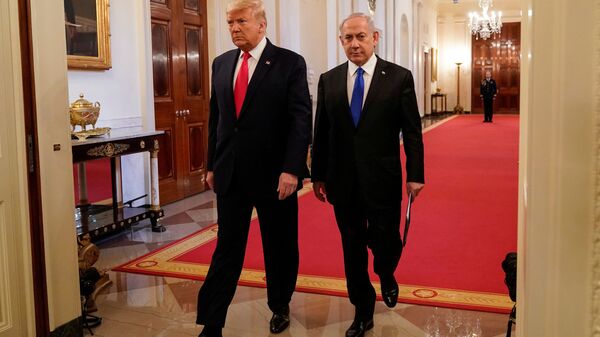US President Donald Trump on 28 January unveiled his long-touted peace plan as a means of resolving the Israeli-Palestinian conflict.
The US head of state delivered his proposal in front of an audience at the White House, with Israeli Prime Minister Benjamin Netanyahu at his side.
The plan would “more than double the size of the land currently used by the Palestinians”, along with providing them the use and management of facilities at the Haifa and Ashdod ports, along with a “Palestinian development of a resort area on the north shore of the Dead Sea, and continued Palestinian agricultural activity in the Jordan Valley”.
The plan, or “President Donald J. Trump’s Vision for Peace, Prosperity, and a Brighter Future for Israel and the Palestinian People” as it is named on the White House website, also proposes “modern and efficient transportation links for easy travel and movement of goods throughout the future state of Palestine, including Gaza and the West Bank”.
The Palestinian side, however, would be required to recognize Israeli sovereignty over major settlement blocs in the West Bank.
The “Vision” also insists that Jerusalem “will stay united and remain the capital of Israel”, while suggesting Al-Quds as “the capital of the State of Palestine”. Israel would also continue to “safeguard” the holy sites of Jerusalem.

“Israel has agreed to a four-year land freeze to secure the possibility of a two-state solution”, the plan states.
The “Vision” mentions a “massive $50 billion Peace to Prosperity economic plan” offered as a means to “spur the Palestinian economy”.


